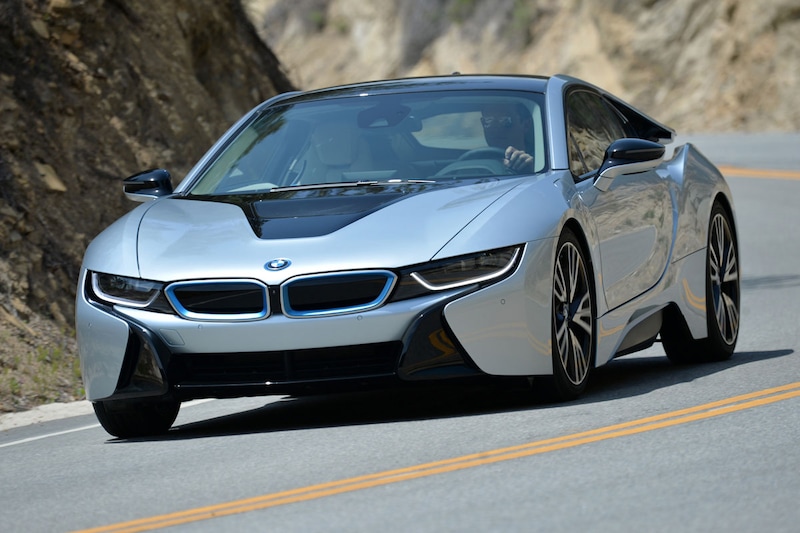How much does a used one cost?


This month marks ten years since the first BMW i8 rolled off the production line. Reason for a look back at a supercar that was way ahead of its time.
2014 is a good year for anyone who likes fast cars. In that year, many manufacturers opted for a six-, eight- or ten-cylinder engine for a lot of power. At BMW they take a different tack, in addition to the usual M engines. In 2014 it launched the BMW i8. For example, instead of the six-cylinder from the M3, the i8 gets a 1.5 three-cylinder turbo engine combined with an electric motor. The rear wheels are driven by the petrol engine while the electric motor controls the front-wheel drive. This makes the i8 a plug-in hybrid, which means that the battery can charge itself while driving, but you can of course also plug it in. The total power is 369 hp and 570 Nm of torque due to the combination of petrol and electric motor. Thanks to the use of aluminum in the chassis and carbon fiber on the inside, the weight of the i8 remains relatively low for a car with an electric motor; 1,610 kilos for the Coupé and 1,670 kilos for the Roadster. The i8 sprints to 100 km/h in 4.4 seconds, partly thanks to the all-wheel drive. The puff only goes out at 250 km/h.
The BMW i8 is, and in fact still is, a special car for its time. The use of electric motors is not yet commonplace in 2014, due to their high cost. Yet with the i8, BMW is building a unique creation of luxury, speed and (relative) economy. The low, wide design of the i8 in combination with the butterfly doors produces mixed reactions. Sales are going well for BMW despite the purchase price of €151,000. In the Netherlands, the model has attracted 378 buyers over the years and more than 20,000 copies leave the showroom worldwide. Particularly high marks for a supercar. The low CO2 emissions, which resulted in a low bpm and therefore a relatively low sales price, undoubtedly play a role in our country, as does the pleasant power of 370 hp.
Time for something different
A facelift follows four years after the launch. In addition to some visual adjustments such as a changed front bumper and different wheels, the electric motor is undergoing some refinement. The total capacity of the battery increases from 7.1 kWh to 11.6 kWh while the power increases. From now on it produces 12 hp more than before. This in turn ensures that you can drive 120 km/h on the electric motor, while previously it was only 70 km/h. The electric driving range remains stuck at 55 kilometers. In addition to these innovations, we are experiencing the introduction of the Roadster with soft top. This version costs more than €17,000 more than the Coupé. The chassis is also undergoing refinements, which improves road holding.

Production of the i8 will stop in April 2020, but it is of course still for sale as a used car. But what do you still pay for a used i8? There aren’t very many for sale anyway, just sixteen pieces. The cheapest of the bunch sells for €54,945. If you are looking for a copy with significantly fewer kilometers, the asking price will increase. The average asking price is roughly between €60,000 and €75,000. For the most expensive example, an open i8 that has only 30,000 kilometers on the clock, you have to pay €117,880.
A real successor to the BMW i8 never materialized, although the i16 comes close. That’s a kind of combination between the M1 and i8, but unfortunately it never makes it to production stage. BMW simply sees too little market for a (partly) electric supercar and the corona crisis will do the rest…
– Thanks for information from Autoweek.nl






